Where the Niagara Lake meets Lake Ontario, there are two forts that still have massive cannon batteries pointed at each other. One is Old Fort Niagara on the US side and the other is Fort George on the Canadian side. Both forts are steeped with incredible history and stories that will blow you away. It’s a story of battles, sieges, trading and conquest.
I had the chance to visit Old Fort Niagara on a recent trip to Buffalo and Niagara USA and had quite the memorable time exploring the well preserved site. Ironically, I’ve visited forts all over the world but I’ve never thought to explore the forts right in our backyard. The history may not stretch as far back in time but Old Fort Niagara is kind of place where the past comes to life.
Read more about Niagara
- Jeddo Mills Antique Review
- 3 Day Adventure Itinerary in Niagara Falls, Canada
- Best Wineries on the Niagara Wine Trail in the US
- Best Wine Tours in Niagara Falls, Canada
- Restaurants To Try in Niagara-on-the-Lake, Canada
How to find the best travel deals?
- Hottest deals – Bookmark the frequently updated travel deals page.
- Car rentals – Save the most money through car rental coupon codes.
- Hotels – Use corporate codes or get Genius 2 tier with Booking.
- Flights – Have you ever heard of the “Everywhere” feature?
- Insurance – Make sure you’re covered for all of your adventure activities with the best travel insurance.
In This Article
History of Old Fort Niagara

Old Fort Niagara is truly an exciting place to step foot on. Located on the eastern bank of the Niagara River at Lake Ontario, this was the original site of a French fortress where they built much of what you see today before flip flopping back and forth between the British and the Americans.
The French built this stronghold as a way to fortify their position in the Niagara region and to protect themselves from the powerful Iroquois native Indian nation. It’s the French that expanded the fort to house the “French Castle” and counter the impending British threat.
The colonial wars between the British and the French waged on.
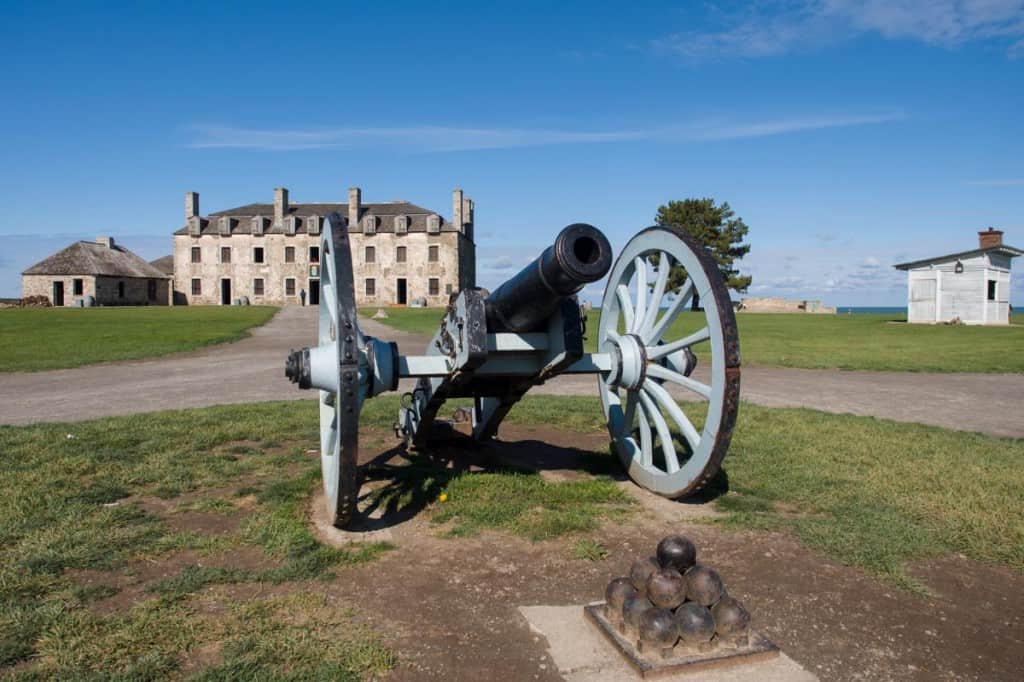
It wasn’t until the British was able to convince the Iroquois to join their fight and the use of genius siege tactics that they were able to take over the fort. The British landed four miles east and over the course of 19 days, surrounded the fort and dug a maze of zig-zagging trenches in order to get their cannons within firing distance to bombard.
On July 25, 1759, Captain Pouchot surrendered Fort Niagara.
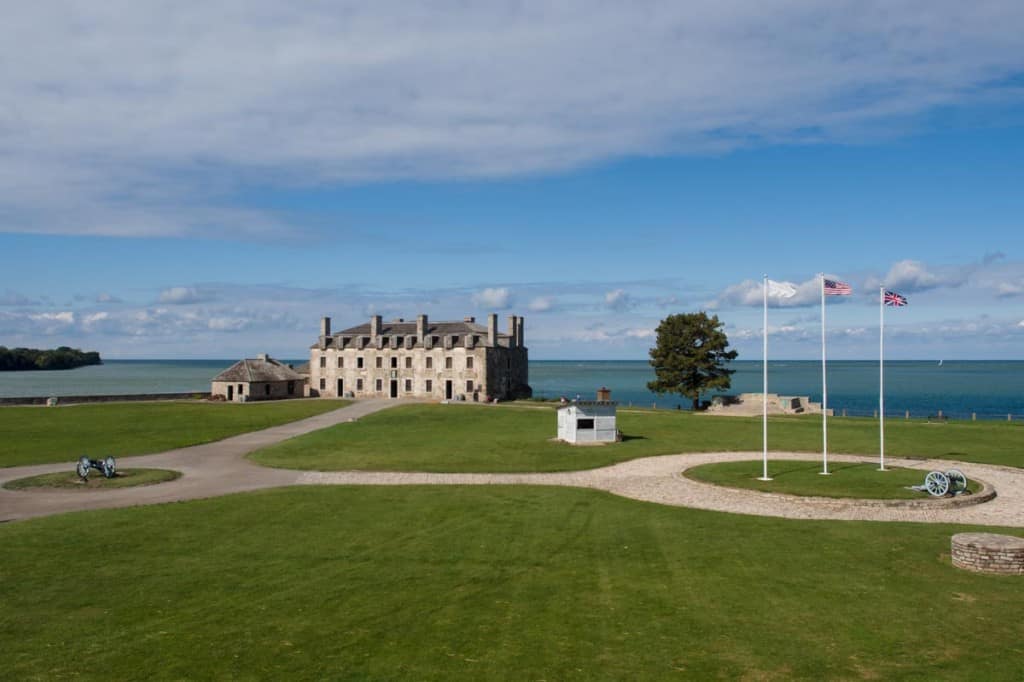
During the American Revolution, it was a base for Loyalists but was eventually ceded over to the United States at the end of the war. As a result, the British ended up building Fort George on the west side of the river, completed by 1799.
Fast forward to the War of 1812 when war broke out between the Americans and the British. The Americans provoked the British by attacking Queenston across the border. The British was able to repel the invasion force but not without taking on heavy losses.
Both forts then exchanged cannon fire but because of Fort George’s elevation advantage, were able to bombard the Americans much more effectively.
To counter this, the Americans took the roof off of the “French Castle” and placed cannon batteries on top. Americans eventually were able to capture Fort George but later abandoned months later after several losses to British in modern Canada.
In ruins, Fort George was reoccupied by the British and on December 19, recaptured Fort Niagara, raiding and burning villages en route.
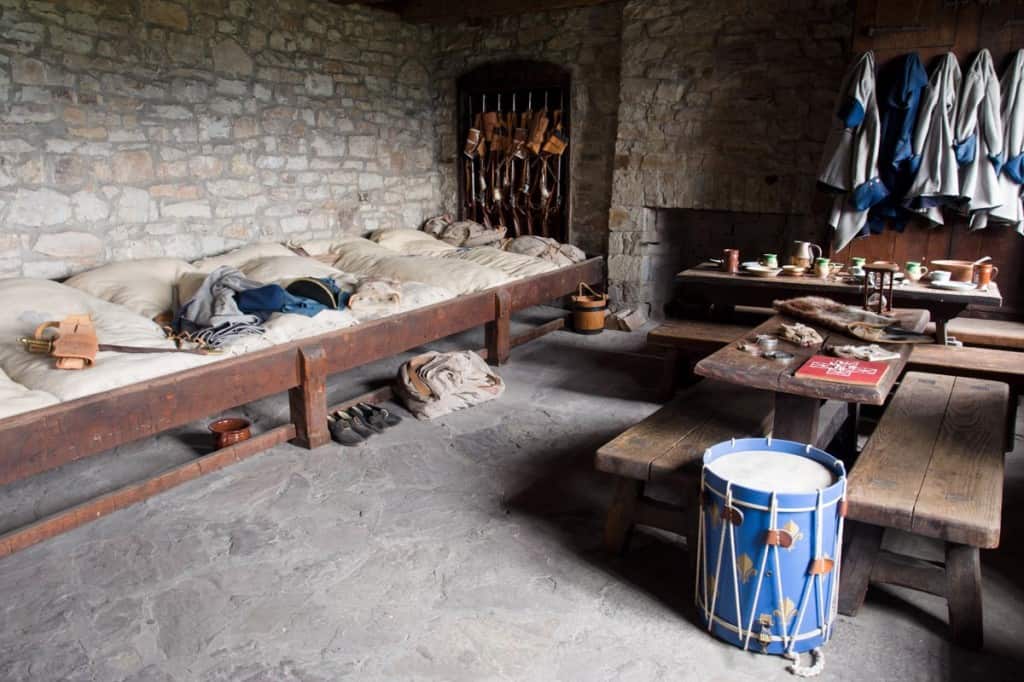
The War of 1812 was ended by the Treaty of Ghent, signed on Christmas Eve 1814. The treaty declared that anything the British captured during the war be returned to the United States including Fort Niagara.
Exploring Fort Niagara today
Visiting Fort Niagara today, there’s quite a bit to see as it’s been preserved to look like how it was back in the 1700s. In fact, this fort is one of the oldest buildings on the Great Lakes.
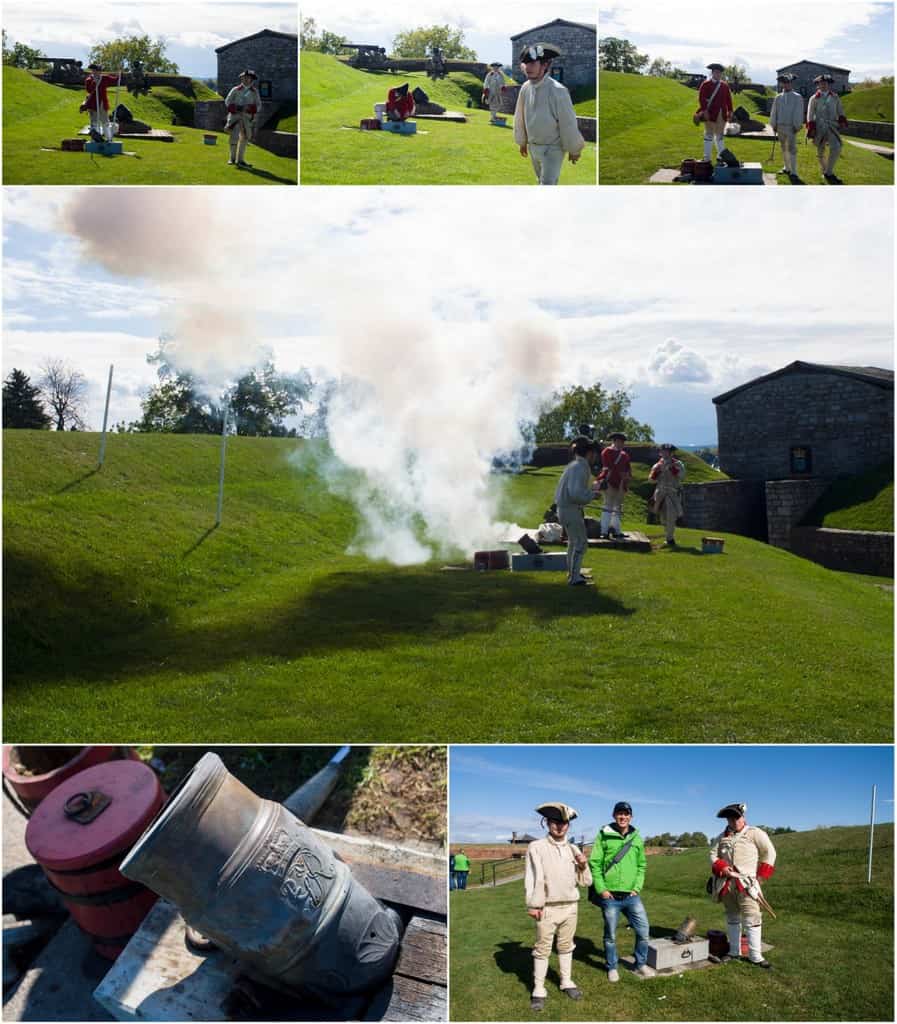
I’m such a history nut that I thoroughly enjoyed exploring the fort and its various buildings. To have a fully restored French colonial castle is also something you rarely get to see.
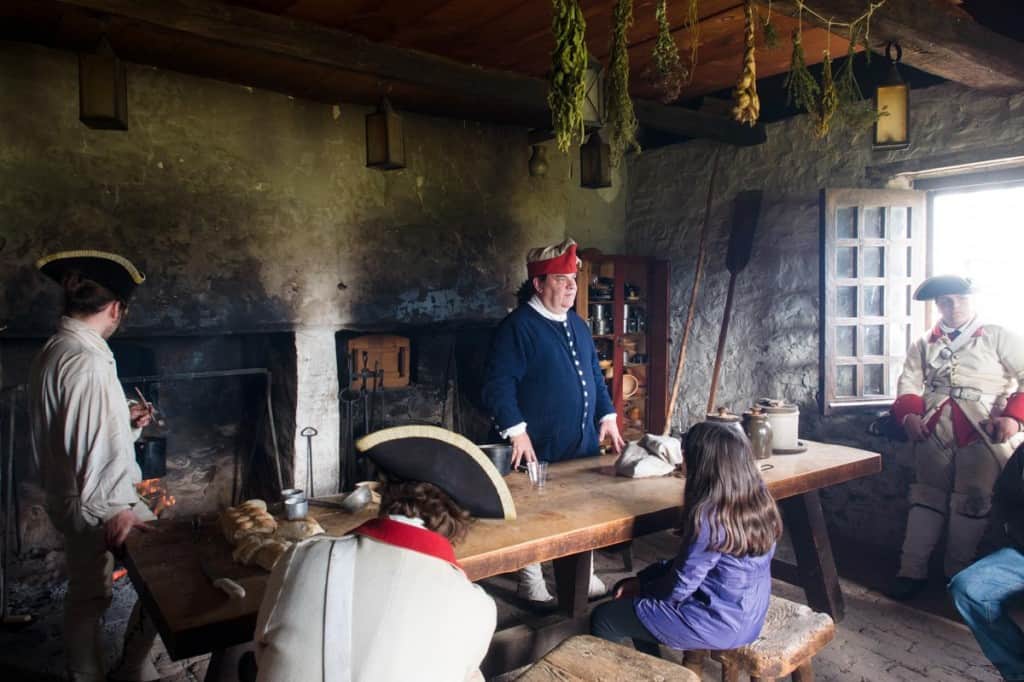
I also thought the fort did an awesome job at making the visit interactive as well. While we were there, we watched a mortar and musket demonstration. In The Bakehouse, we also had a chance to hear some stories from actor soldiers about what it was like to be a soldier in the French garrison.
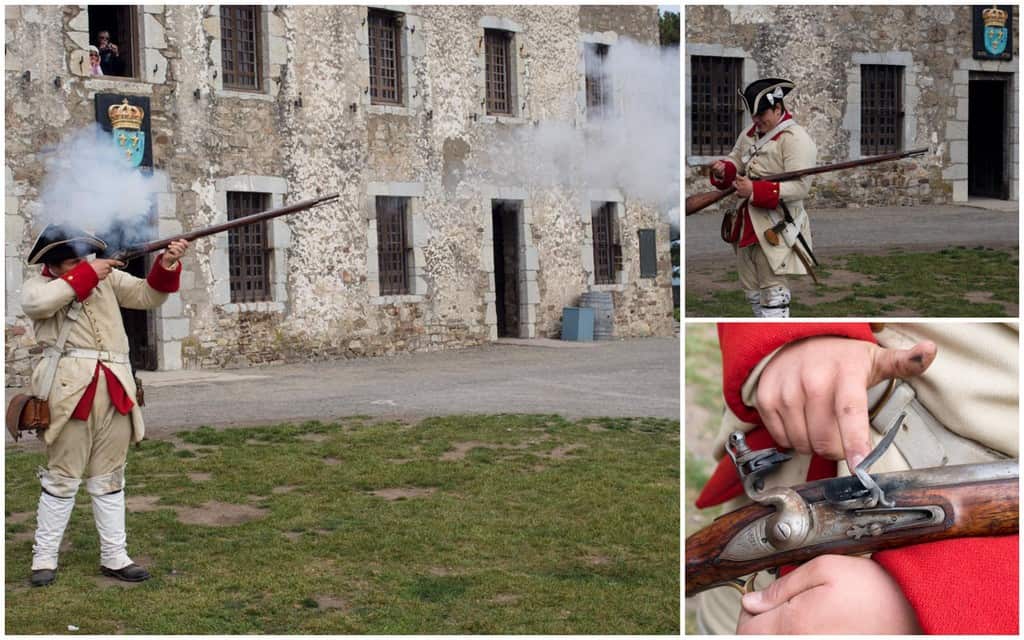
Lastly, the view from the fort is spectacular, whether it’s climbing up to the top of one of the two towers to get a birds eye view or heading out to the back of the “French Castle” to see as far as the Toronto skyline across Lake Ontario.
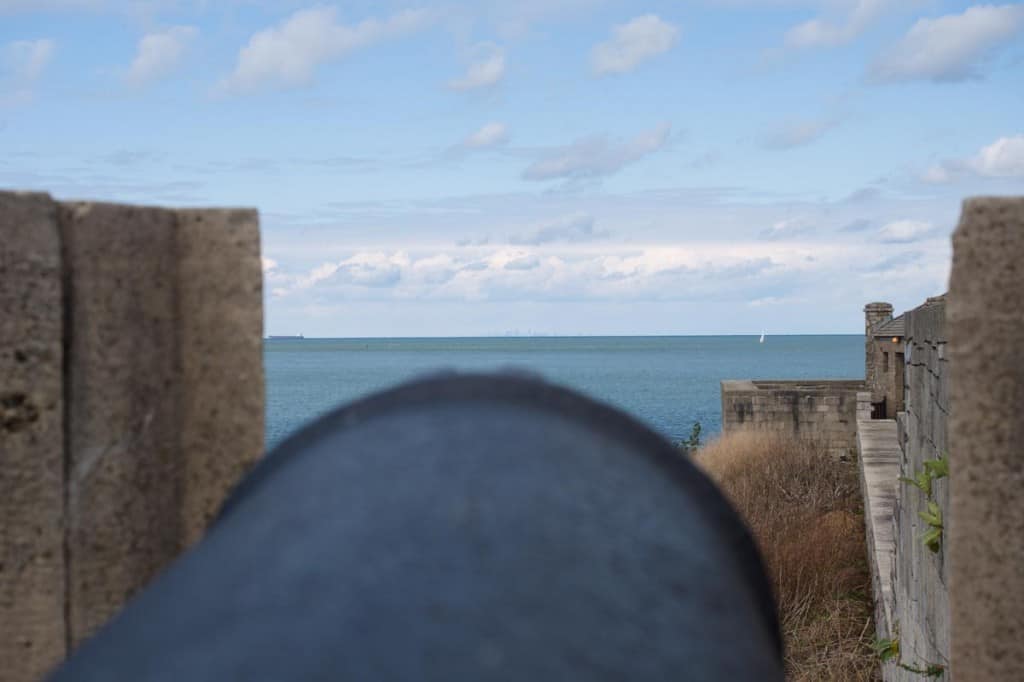
Bottom line
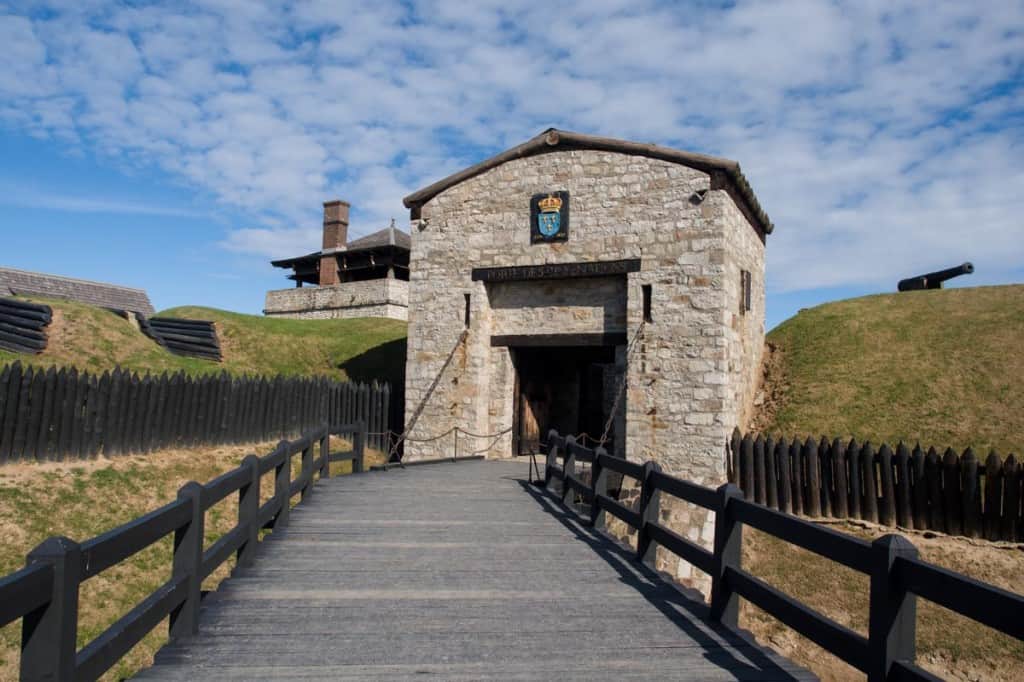
If you enjoy a little bit of history and big cannons, this place is worth a visit. If you enjoy a nice stroll through some really damn old buildings that were crucial in the shaping of two nations, you should also come. If you’re exploring the Niagara USA area and want to know what would be a fun activity for a morning or afternoon, add Old Fort Niagara to the itinerary.
Where to Find Old Fort Niagara
This trip was sponsored by the Greater Niagara Region of New York State, however the opinions expressed in this post are my own.
What you should read next